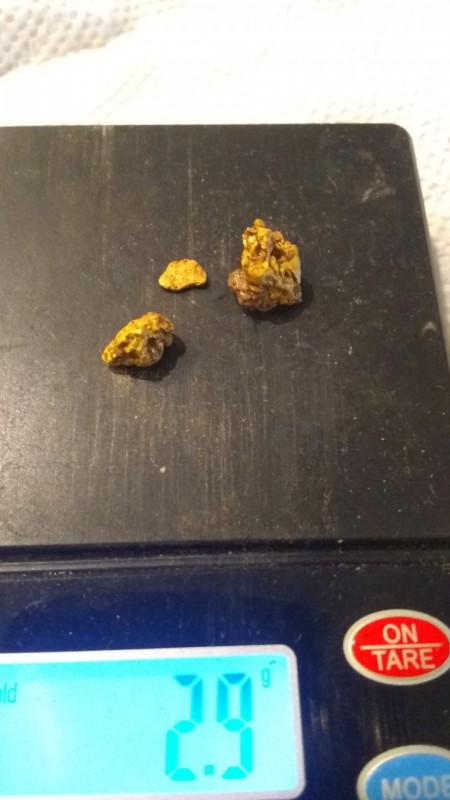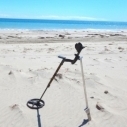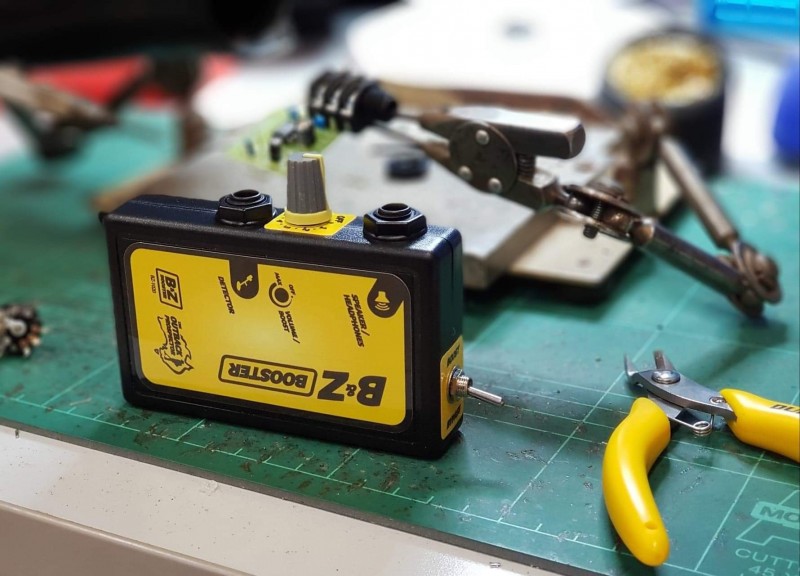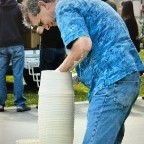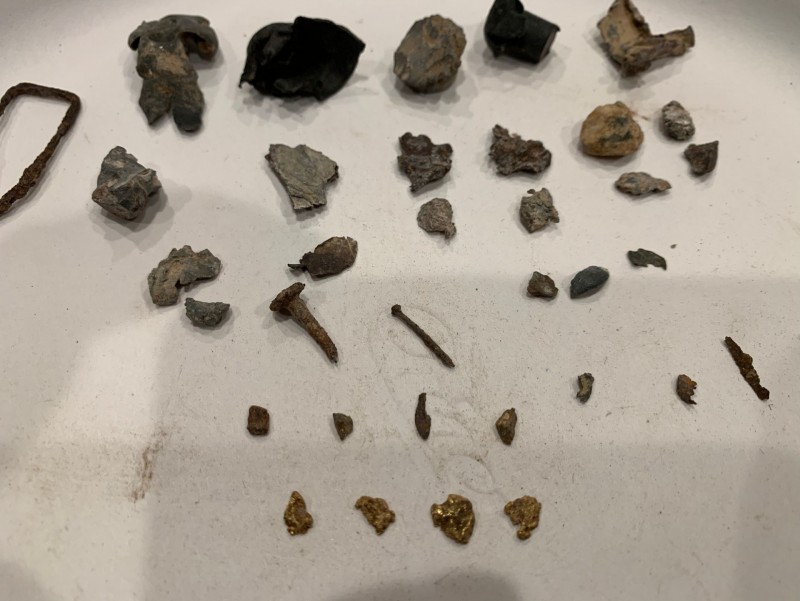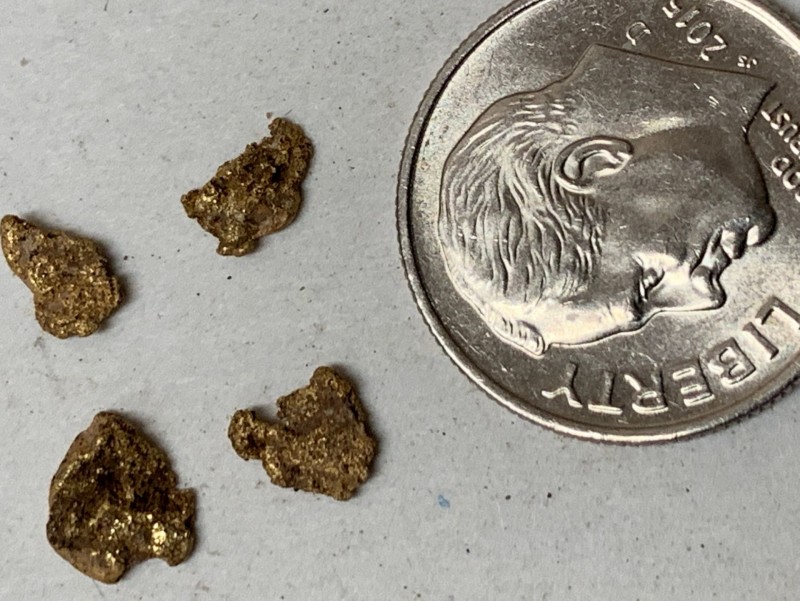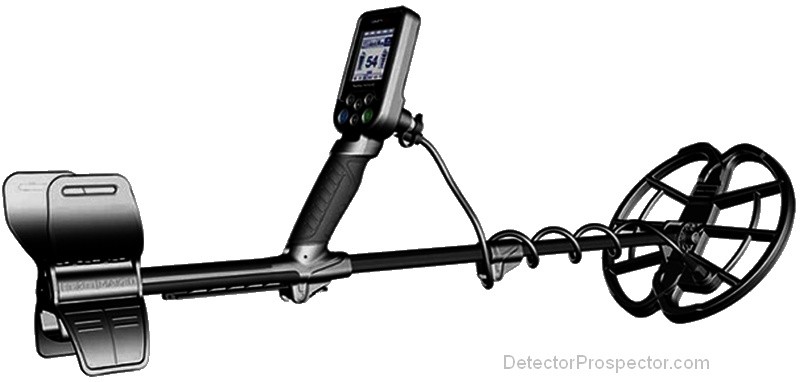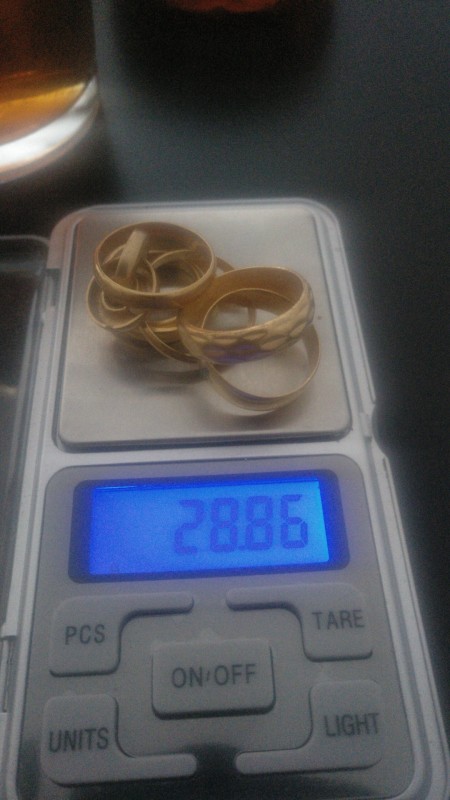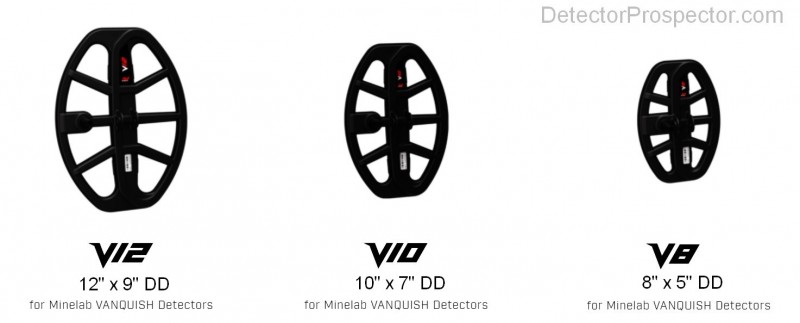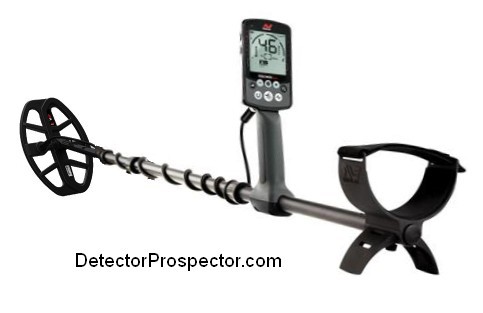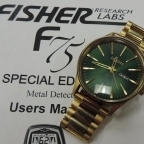Leaderboard
Popular Content
Showing content with the highest reputation on 11/05/2019 in all areas
-
The best Australian nugget Parker had was that hottie he used to hang out with. She probably bailed on him...6 points
-
I looked it over. It goes in a direction I wasnt expecting. He/she is thinking along the lines of an automated nugget searching machine, think hunting dog that finds and points the bird for you. Honestly the questionnaire isn't great. You dont know enough yet to ask the right questions. The concept is interesting though, and you have some of the most experienced folks in the world on this forum. I think you should forget the survey for now and start a new thread laying out the basic idea and asking for input, why it would or wouldn't work, the challenges involved, the most Iikely approach, etc. If you make the topic interesting enough and the thread takes off you will get more and better info than you are imagining. It would likely need to dig and verify gold to be of much benefit, as we spend most of our time digging trash targets. I'll start you off with that tidbit. We get lots of folks that stop in and ask one question and sometimes never even return to read the answers. Show people your really interested and are sticking around and it will help.5 points
-
Two letters only to cover this.....BS. If you believe this, then I have a second hand bridge I can sell you in Sydney.5 points
-
Welcome to the forum! I’ve been detecting for coming up on 50 years now. One thing I can promise you is the detector you are using is not nearly the biggest factor in success. That’s the marketers at work. I can use any, and I mean any of the top tier coin, jewelry and relic machines made by any of the manufactures and basically do just as well with any of them. The tech is mature and it’s splitting hairs with all the over $700 models these days, and what you get for the price is dropping by the day. Nugget detecting gets more technical but for the vast majority which detector model you use is largely a popularity contest. I choose detectors based on basic factors like feature set, weight, waterproof or not, audio, etc. not whether one is magically better than all the rest at finding stuff. There are people out there doing better with a Garrett Ace 250 than some other with a much more expensive CTX 3030. How is that possible? Easy. Learn your basic skills which translate to any detector. Coil control and target recovery. Then put yourself in good locations, put in lots of hours, and dig lots of targets. That’s it, just good locations and hours. It’s not rocket science. So my advice is keep and use what you have. If you are dissatisfied with your results, it’s not the detector. Work on your detecting skills and finding better locations. Or get another detector if you want... but don’t expect that simply doing that will really make any difference. Best wishes and good luck! Edit: I hate it when people don't simply answer the question asked. So for what it is worth I sold my CTX 3030 as soon as I got my hands on an Equinox 800.3 points
-
Thanks to Davesgold and the X-Coil manufacturer, I got a gifted 17x12 Spiral Wound coil. The manufacturer took notice of my multitude of problems with the connector modification and sent me a new coil from Russia. Bravo Zulu X-Coil for prospector support. The weather has improved here in Sunny Yuma so I replaced the 17" round with the new coil and took it for a spin. I balanced it over the ferrite with no problems and I experienced no bump sensitivity. The first thing I noticed is how well the coil balances on my modified hip stick rig. I do a lot of detecting in the walls of desert washes, putting the coil on its side. The 7000 tends to get the "wee waas" if you don't keep them flat, but this coil seemed to really tone it down and it balanced really nice for less strain on my arm and shoulder. On relatively flat ground I think I could swing this coil all day for less wear and tear on my 65 yr old frame. I ultimately didn't find anything in the walls, but I hit some old hillside drywash tailings and popped these 3 nuggets. All were at moderate depths but I was amazed at some of the deep iron bits I found. Without some side by side target comparisons I can't say that my depth is improved, but I'm getting a lot better ground coverage and I can poke it in between rocks and obstructions. Even if this coil is no better than the original Minelab 14", it's a lot more versatile. This will be my go to coil from here on. I'll stick the 17" round on over worked out patches, but this is my new secret weapon. Again, many thanks to Davesgold and X-Coil X Coil 2021 News3 points
-
Steve, Didi just as you said and heard exactly what you said I would ... Didi have to bump senestivity up to 23 before it started hitting ... Have a good permission deep in the woods along a creek that had 2 old 1900s home sites and hope to hit them soon, Will keep it basic as all the tips say, not mode hop and have fun. Thnaks Brian3 points
-
The stories George could tell if we could just pry them out of him! I was with him when he found his last Celtic gold back in 2010.2 points
-
Tracking responds to ground responses and then adjusts the ground balance setting. The amount of ground response it takes to trigger the change plus the speed and amount of the shift constitute the amount of filtering taking place. So the engineer decides first - how much ground response must the machine detect before it decides to change the ground balance setting. It has to be something obviously or there would be no tracking. The problem is the machine cannot tell the very weakest signals from a ground signal. Very tiny items or large items so deep that they appear as tiny items (it's all tiny signals, target size actually is not the issue) all appear as a ferrous type ground signal to the detector. That is why blocking some ferrous range will block some non-ferrous targets. The bottom line is that in order to track at all the machine triggers on a certain level of ground response, and that level includes weak ferrous and non-ferrous signals. That's the first level of filtering since that setting is variable from an engineering standpoint. How often do you want to sample the ground signal and make a change? Every tenth second? Every second? Every two seconds? How rapidly is the tracking occurring? On a Minelab GPX this is a variable setting and in general the faster/more aggressive the setting, the most chance of tracking out non-ferrous. So that's another level of filtering effect. Finally, how much/how far/how big a jump in setting do you want to allow in one discrete track? If the machine detects it is out of balance, should you let the setting jump a tenth of a GB setting in the proper direction, a single number, or multiple numbers. Like the rate of sample above this can make the changes slower and more mellow, or near instantaneous/aggressive. Add these all up and a machine may take two pumps over the ground to track or ten. It can adjust in a second or take a minute. In general the less aggressive the sum of the internal settings the less chance of tuning out tiny non-ferrous signals but the slower the ability of the machine to react to rapid changes in mineralization. Cal it what you want to me that's all a filtering effect, a variable effect based on multiple variable inputs. What it filters is ground responses plus weak ferrous and non-ferrous responses, trading one off against the other. Unfortunately in most machines it is all preset and ground tracking boils down to on or off. I used to never use ground tracking unless absolutely forced to do it. Now we have new machines that give us no option, like the SDC 2300. The new tracking algorithms are quite excellent but for low mineral ground eking the last bits out of a small area I would still prefer to be able to use a fixed ground balance setting to get that little extra edge. This is all far more applicable to nugget detecting than most other types of detecting, but is where an experienced nugget hunter develops an edge most other detectorists don't have. TRACKING, MOTION, AND SWEEP SPEED – PART 1 TRACKING, MOTION, AND SWEEP SPEED – PART 22 points
-
From my article referenced above by phrunt are my suggested starting point for gold nugget hunting without using Gold Mode. This gets away from VCO audio for those that do not like it, adds tone capability, and very importantly low frequency options. There are places where these settings can be more effective than Gold Mode. You can also use Field 2 as long as the settings are the same - beware the preset notching of target id 1 and 2. Notching those two numbers will be fatal to your nugget detecting, which is why I suggest starting with Park 2. As far as I have been able to determine there is no difference between Park 2 and Field 2 other than the presets - performance appears to be identical with identical settings. Both the Equinox 800 and Equinox 600 have identical performance when using the same mode and settings. For Park Mode 2: Frequency: Multi Ground Balance: Auto (Ground pump method with manual tweaking) Sensitivity: 16 – 25 Recovery Speed 800: 4 - 6 (default is 6) Recovery Speed 600: 2 - 3 (default is 3) Iron Bias: 0 Accept/Reject: Everything accepted, rely on tones (alternative reject -9, -8, and -7 if too much ground feedback) The settings are a starting point to be adjusted as needed. More sensitivity obviously adds more sensitivity but can add instability. Lower recovery speeds will add sensitivity but also add to any coil knock issues being experienced. Increased iron bias may help in trashy areas and with some hot rocks but could filter out the weakest non-ferrous signals. Judicious notching can help with certain hot rocks. Ground tracking and/or lower frequencies can help deal with the worst ground. Every adjustment is a trade-off and comes with a cost - learn your detector! See the article for details. The 6" coil is both more sensitive to the smallest targets and less bump sensitive.2 points
-
I doubt it's 100% scripted, but I also doubt even more that it's 100% WYSIWYG. A couple hints: 1) he's not smiling; 2) (apparently) he doesn't say he found these. Anyone who is trusted to hold that much gold can pose for a camera. Are the show's promoters going to play it up? Sure. Is it ethical? Maybe in their world. 'Reality TV' is full of people who rationalize their tactics. There are worse places and people who do a lot more than that. I'd like to say I wouldn't do it if I were in their shoes, but I'm not (and thankful for that).2 points
-
Welcome to the forum. So tell us a little more about yourself, who you are, and what made you decide to research this subject. What university are you at? What is your main line of study and how does this play into it? How many questions are in the survey? Will results be shared with forum members? Thank you!2 points
-
I do hope that you know that I was joking with you, but I think that some of us would have liked more information on where and how you found them. Sorry if you took it the wrong way.2 points
-
The overall cost of a detector does not necessarily imply that it is the best detector for yourself nor for the areas/sites that you will detect. I would put more weight on the person who learns their given detector inside out vs someone who simply goes out and purchases the most expensive detector available expecting to make immediate good finds. Also a lot has to do with the types of detecting sites available to you, and the likelihood of making good finds on them. For some people buying the most feature packed/expensive detector available can be a recipe for being overwhelmed with the number of settings available, or to find that they never require all those settings to be successful in the first place. Sometimes keeping it simple will allow you more time to detect and less time fiddling around with endless program options and settings. If you do not have overly mineralised soil and do not beach detect, then there may be no advantage to extending yourself to purchase a CTX, the Anfibio is pretty much top of the range from the Nokta/Makro stables and should serve you well. In my area quite a few detectorists have actually moved on from the CTX to lighter detectors including the XP Deus and Minelab Equinox, as not only are they more enjoyable to swing for longer periods, they also perform just as good if not better on the older sites with abundant junk and iron. Personally I think you need a few good months on a detector to see whether you gel with it or not, if you don't then it may be time to move onto something different. The tones on offer is a real killer for me, if they don't suit my ears or offer descriptive audio then I won't expect to get much further on that particular detector, and once again that is something you only learn over time.2 points
-
Welcome Jbone to the forum, Since you mentioned that you are relatively new to metal detecting and considering a purchase of a different metal detector, here is what I would suggest. Most newcomers to the hobby/sport purchase a metal detector and immediately start second guessing if they made the right choice or not. In my opinion you have made a good choice in the detector you purchased and it has more than enough features for a newcomer to learn and hopefully understand what each feature does over a period of time. Use this first purchase as a stepping stone in the future as you become experienced and understand of what your detector is capable of doing and if there is features that you find that are lacking in certain areas, then use that information in another detector that will fill that need. You will get many opinions on what detector to have or use on this forum, but it will be up to you and the time you put in learning any detector and that will translate how successful you will be. Also it seems the way the used metal detector market is today, the resell value would not be in your favor.2 points
-
On one of the "Gold Trails" episodes, in an auriferous floodplain, Kevin Hoagland used a GMT in the black sand mode to locate and flag several small spots. These spots, totalling several gallons, produced early 2 DWT of fine gold. Similarly, a buddy of mine, doing the same in a Big Bear area wash (Jacoby Canyon) in 45 minutes accumulated 2.5 gallons of 1/8th inch screened dirt, from which over 2 DWT was recovered. It works. But it only works well where surface flooding produces clearly defined paystreaks in auriferous washes. I use a dry wallers trowel to scrape up the thin paystreaks. Hope this helps; HH Jim2 points
-
Probably made by Switchcraft, same as 5 pin. You may be able to source one from mouser.com2 points
-
For me, that was basically the primary reason. I needed a water machine. Didn't want to take my V3i anywhere near water. If I had to choose only one machine, it would still be the V3i with that 13" Detech. But I couldn't ignore the Equinox and all it offers for the price. Same reason I likely won't be able to ignore the Simplex. Nice backup all terrain from all we are hearing from respected names in the hobby.2 points
-
I recently posted this to another forum and thought it might help benefit others and maybe generate some interesting discussion here. A booster can only amplify whatever the detector audio delivers no matter what anyone try’s to tell you. The inbuilt booster speaker system in the Minelab GPX 4500, GPX 5000 is too coarse for effective use via the Target Volume control, this same control is also used on the GPZ 7000 in conjunction with the WM12 and is also too coarse! I originally popularised the booster speaker concept when developing a series of instructional videos, looking for a way to obtain good audio that allowed ambient noise of a goldfields environment to also come through so viewers could experience as close as possible the way a detector sounds when in use. In conjunction with this I also discovered the benefits of removing the immediate audio from your ears and placing it further away allowing faint signals to come through (similar to a Television sounding loud in the kitchen compared to being right in front of it). Our ears are designed to collect sound, especially sound that is further away, our ears are also more sensitive to variation in pitch similar to our eyes are to movement so being able to hear the threshold at all times as a reference point is very important, but not at the expense of those around you and small target signals. The aim with a booster speaker is to lift up the overall volume of faint deep targets without drowning everything else out, as such in less trashy sites a higher volume can be used in conjunction with the correct threshold level. You need to set the volume to compliment the threshold, which needs to be smooth and stable, if someone can hear your threshold miles away you’re doing it all wrong and negating any advantage as well as driving other operators around you nuts. Best way to go is to set the detectors settings to be smooth and stable, I tend to use conservative Sensitivity/Gain settings along with Volume and Threshold. The Target Volume needs to be kept low to allow the booster to drive the audio without causing distortion, this is especially important on the GPZ 7000. If your detector Target Volume is set to aggressively the booster is then going to amplify that aggressive distorted audio. The threshold needs to be smooth to the ear to start with, if it stutters the amplifier will exacerbate that, if it is too loud it will drown the audio as you boost it. The B&Z booster is best used for single or twin speakers, it has a very good range of amplification with hardly any distortion. This is especially important because you need to use the booster to adjust the overall audio to suit the ambient noise conditions, in quiet conditions you lower the booster volume so the threshold is not dominating, if its windy then you increase the volume so the threshold can be clearly heard. The B&Z booster runs on 2 x AAA alkaline batteries which should last up to 3 weeks at 6 to 8 hours per day, it is in a plastic housing to cut down on any excess metal on your body. The B&Z can be used with headphones, to do so the volume of the detector needs to be lowered so the booster volume can be lifted above 2 1/2 to 3 to avoid noise and hiss from the potentiometer, with the GPX and GPZ machines this can be as low as 6 or even lower if required depending on the sensitivity of the headphones being used. Higher tones tend to require less volume, lower tones more, lower tones (30 and down on Minelab PIs and ZVT) are generally better heard through headphones rather than speakers, this is due to all the natural low frequency noises heard in natural ambient environments, Noise cancelling headphones really compliment low frequency Tones. The audio of the Minelab GPX and GPZ machines is converted to analogue via the speakers, boosted speakers tend to iron out the steppy digital nature of the Minelab audio, this helps a lot with running less noise floor filtering through the Stabilizer or Audio Smoothing controls, which is were all the edge of detection depth performance lays. The B&Z only ever magnifies the pure audio of the detector with no colouring of the audio through filtering, you only ever hear the “pure” audio intended by the designer of the metal detector. Call me a purist but that’s the way I prefer to hear my detector. Hope this helps JP1 point
-
Parker has been put on to some Australian gold. They are great looking nuggets! We'll have to wait to see how he did it. https://www.tvshowsace.com/2019/11/04/gold-rush-parkers-trail-season-4-filming-in-australia/1 point
-
You are not allowed to do anything these days here in Australia now I know why. https://1drv.ms/v/s!AqiKyrTQ2zQ3rAYN5Y7CSS8YkNVd?e=7Dj8Yp1 point
-
Thanks all, I really appreciate that you all are willing to share, I have learned a great deal from this conversation. I will slow down to a crawl when I go out hunting nuggets next time (in a week in AZ for two weeks.) Thanks for this site.1 point
-
You've come to the right place -- lot's of helpful info. Also check out YouTube videos, particularly those that highlight the Kruzer. Always (whether reading or watching) keep in mind that what others say and do might not be correct, or even if correct in their situation, might not be right for you and the site(s) you hunt. Take all advice as suggestion, not absolute fact. My advice to anyone with a new detector: read the manual. Go out for a hunt (even if just in the backyard) and then read it again. I look forward to sharing with you ideas, photos of finds, etc. Welcome aboard!1 point
-
This is a great point Simon. Whether I’m using a multi-frequency or a single-frequency detector my finds all look the same.1 point
-
Most likely a flint / chert nodule. See photos at the bottom of the link, good info in the text.1 point
-
To be very realistic, it might be next spring or summer before this machine might be available. And that might be very optimistic to say the least about the subject.1 point
-
Finally found a video of someone using the pulse dive pinpointer on land. Seems pretty capable.1 point
-
Gold modes on the 800 can go deeper and hit smaller gold from my experience. However, the Equinox 600 or 800 in Park 2 or Field 2, multi frequency, set on 2 tones with only -9, -8, and maybe -7 (depending on ground and hot rock conditions) rejected and the low tone/ high tone break set at 0, -1 or -2 (depending on if the gold in my area is really small) works great for me. For a 14 gram nugget both should detect it easily and really deep! Both my Equinox 600 and 800 in Park 2 or Field 2 will detect a US nickel coin (4.9 grams) at 26 to 28 cm with the stock 11" coil. So a 14 gram nugget!!!!!!!! should be an interesting test. Just remember if you do the test on both detectors in Park 2 or Field 2 to set the recovery speed on the 800 at 6 and the recovery speed on the 600 at 3 so that they are the same. Jeff1 point
-
67GTA -- very good point. I was not aware that Park1 defaults to 3, on the 600. If that is true, then absolutely run that thing down to 1, for maximizing depth. Steve1 point
-
Your recovery speed affects depth also. I think Park 1 defaults to 3 (fastest) on the 600. Dropping that down to 2 or 1 might get you another 1/4-1/2 in depth, but you lose some separation speed.1 point
-
I dont buy anything, i dug them up in a farm field in England..1 point
-
Brian, Super. It sounds to me like the machine is behaving just as it should. Remember, if you "like" the idea of hearing the iron audio, as well as the high tones, you'll have to hit that horseshoe button every time you turn the machine off, and then back on. That is not a setting that is "saved;" the default is all-metal mode OFF (i.e. iron discriminated) -- at least in Park 1 mode (I don't recall if that's the default on the other modes, but I think it is). Good luck on those old home sites! I bet you find a few goodies! Steve1 point
-
Brian, Disturbed dirt (freshly dug) is notorious for reducing maximum detection depth. Still, 10" is a DEEP dig, for a coin a small as a dime, for even the very deepest of VLF-IB machines (and I include the Equinox in that list of "very deepest of VLF-IB machines). IF you are getting "peeps," on a 10" deep dime, you are doing pretty well, especially in newly disturbed/dug soil. Couple things...one, hit your "horseshoe" button, if you haven't already, to put it in "all metal" mode, and don't disc. anything. Doing so (all metal, no discrimination applied) you will probably get more consistent "hits" on the dime -- albeit "iron" tones. You should get a mix of iron tones and some high tone chirps/peeps. If this is what you find, on a 10" deep dime, in freshly dug dirt, you are doing pretty well, and I would be willing to say your unit is functioning properly. Steve1 point
-
Which parts are you looking for? From the pictures that I have seen it looks intact except for the cup that catches the gold at the drain off. Also a better picture of the item in the bottom left corner would have helped to see the entire unit. That item looks to go over the top of the rest of it so that it will separate the large items that are not gold. Is that correct or am I seeing something that is not there?1 point
-
1 point
-
I was running the 7000 hot as I could maxed no filters normal hi yield semi auto SP1 enhancer, this was a soft sweet signal that finally sounded like something other than surface trash down about 4” on a hillside just above a wash in what i latter learned is a heavily pounded old patch with little left to give. It came out in one piece looking rusty and worthy of tossing aside except it was not magnetic so I began scraping, chewing and bending. Yellow began to emerge and that’s when I should have slowed down except it looked more like pyrite to me so I kept working at it and I was surprised it only bent a little before breaking, looking at it now it appears spongy and that may be why it broke the way it did. I’m not actually 100% convinced yet that it’s gold seems like it could be perhaps mixed with something else? This would be the first piece in a new area for me and I’m unfamiliar with hmmm the gold there and host rock and well everything. I was finding a lot of lead and bullet fragments so it seems there should still be more although today only the one (now it’s 4) for me, if in fact it really is gold and not mostly pyrite or something. my scale is in Santa Clara so I don’t know the weight?1 point
-
1 point
-
Good point, I have recovered dimes and pennies that were paper thin from the salt yet their diameter was fairly close to original. I think you could be right, here are some what looks like collectable knock offs on amazon that are very similar to yours: https://www.amazon.com/YEARS-Ancient-GLADIATOR-CHRISTIANITY-Velvet/dp/B07RR3V787?SubscriptionId=AKIAILSHYYTFIVPWUY6Q&tag=duckduckgo-ffab-20&linkCode=xm2&camp=2025&creative=165953&creativeASIN=B07RR3V7871 point
-
Great topic. If I am in an area where gold has been found before (within 1/4 mile) and there are my typical indicators, I will go as Lunk describes. I will pretend my shoe laces are tied together and pretend I am a master painter covering 90% of that wash. The more indicators I see and the more my intuition sets in, the slower I go. But this is only for washes. If I am scanning hillsides (not knowing if there is a gold in the washes below) I will go much faster. I will not walk along the hillsides, however, without my coil to the ground. I have stumbled on great gold with this small rule ...hillsides you would swear on your relatives grave there could not be gold there. But there was. 😬 I started learning gold hunting on claims and for that, I did the slow hunting everywhere. And that taught me the style of gold hunting that gets the bits others miss in their rush. I believe this is really important to learn starting out. But as I began hunting with others, there was a distinct advantage to really covering ground and covering only half of a prospective gold wash. So many more gold areas can be found this way. But I think you need to be able to go back and clean out those washes the slow way, once they are identified. Some people can flip that switch and in my opinion, they are the most successful. So I see it as you need to be good at both methods and even better at deciding when to apply these methods.1 point
-
It’s good to hear things have finally come good for you after your trip to OZ. I too have one of those new coils waiting to be tried out on some of our variable ground in Clermont. Good to hear the Ferrite balance is happening properly and that touch sensitivity has reduced (most touch sensitivity on a GPZ on any coil happens in General Difficult BTW not so much in High Yield). Cudo’s to the X coil people for being so generous. JP1 point
-
Great topic! For me any place that is well known and hammered it has to be a crawl. Learned that the hard way about 7 years ago when I made my first 3 trips to the fabled Rye Patch where there was supposedly gold laying around everywhere. Each trip I spent 3 or 4 full days and found zero nuggets and would have sworn the place was fished out. Trip 4 I decided to go back to an area where I had noticed dig holes on an early trip and slowly and methodically cover every inch of the ground around them. Within an hour I found my first Rye Patch nugget and a few more before the day was over. Since that day I still try to make 3-4 trips there per year and have had very few skunk days. When I look back on it almost every time I hit a long dry spell I realize that I had lost focus and was moving too fast. I don’t have the latest and greatest machine or the best technique and definitely do not have anywhere near the knowledge that many on this forum have. I also don’t think I am particularly lucky or intuitive, but I do have a not so secret weapon that not everybody has – I am naturally blessed with Patience & Persistence. All else being equal he who has his coil moving the longest will find the most nuggets and even without all being equal they will still find their fair share.1 point
-
1 point
-
Le Jag posted this on a french forum: Hi, I do not have much news ... the beta testers' returns are excellent, especially on volcanic sand they have detected a problem of electrolysis on the coil connector due to the strong pulse current the connector has been changed to prevent this the battery has been changed to face the future standard for air transport ... what is still dragging are the headphones FTP considers that the gray ghost that was planned in the package is too expensive so they look for an alternative, probably the koss ... and still no date of release: - / Sounds like a detector with plenty of stuff being worked on still. Funny headphones are an issue. FTP makes underwater detectors already. Anyway, next year folks.1 point
-
1 point
-
1 point
-
Outside of not being waterproof, why would you want to find another detector? Id explore extra coils for that V3.1 point
-
I have the V3i and the Equinox 800. I have not found the Equinox to be a replacement for the V3i even after being well acquainted with it by now. Equinox is faster, and stock coil to stock coil, a bit deeper than V3i in multi operation. Equinox can also get wet. So I see it as more of a complement to a V3i. Nothing aside from a CTX provides the kind of graphic target info and disc tools a V3i does. I still prefer it for most inland hunting particualrly with the 13" detech. I have also found that what it lacks in ordinary separation methods it makes up for in 3 frequency pinpoint. Where the bars shift it is easy to tell where one object ends and an adjacent target begins. I do strongly recommend an Equinox 800 to anyone with a V3i though. What a deadly duo. Never been happier or more productive than with this combo.1 point
-
I like my V3. Used it some this past weekend and enjoyed it very much. In my opinion its too hard to compare an instrument to a tool. The V3 being an instrument and everything else being a tool. Anyway.... Comparing tools to tools.. I watched one of TNSharpshooters comparison videos on an found, in ground target. It was a good video where he ran several detectors over the target, including the EQ800 and the Infibio (or maybe the multi-Kruzer- i disremember which). The Equinox impressed me in that video as it appears to be operating with the 'Trash Density" feature of the Etrac lock in High. This results in clean signal response of accepted targets in the midst of rejected targets. Could be wrong. But I liked the response. The Nokta/Makro did ok, but the EQ800 response was cleaner. I still do not have any desire to own an EQ800 as my needs are different, but I was still impressed non-the less. If that helps. HH Mike1 point
-
If a train leaves Paddington Station at 0900 hrs with 15 people, travelling at 45 mph, with a full tank of diesel and the rain starts at 0930 hrs from an easterly direction. How long will it be ‘til I give up calculating anything and just go detecting Your analogy is good Steve. I’ll be honest and say I really didn’t understand what recovery speed was all about until I read this. So, as I seem to write most days, thanks1 point



